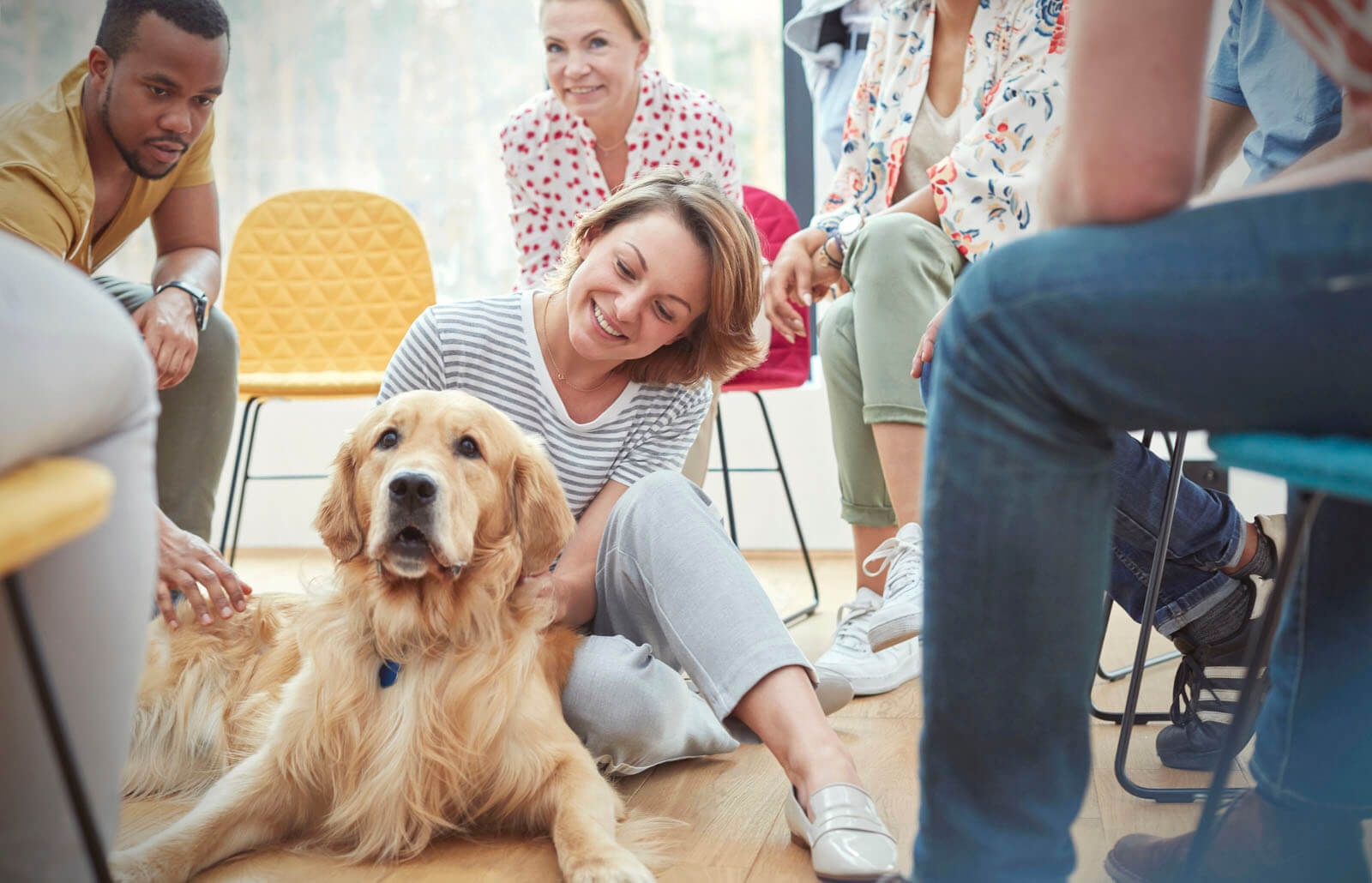Socialization of the Dogs
Socializing your puppy and the adolescent dog is one of the greatest strategies to ensure that they grow into kind and confident adults.
Make your puppy socialize:
The most important period of learning in a dog's life begins at 3 weeks of age and ends between 16 and 20 weeks. During this time, pups can be exposed to a wide range of sights, sounds, scents, and feelings without growing afraid. Puppies that do not get these experiences may never learn to be comfortable in unusual situations, which may lead to anxiety, fear, and aggressiveness later in life. To give your puppy the greatest start possible, follow these steps:
Handling
Young pups should be hugged and handled by as many different individuals as possible on a regular basis. Maintain a gentle and pleasant interaction with the dog. Place the puppy in various positions, softly touch her paws, massage snout, brush the back and sides, and inspect ears.
Prevent Aggression
It's not necessary to show the dog who's boss or to try to dominate. Confrontational methods, such as pinning your dog or scruffing them, usually backfire and result in the aggressiveness that dog owners desire to prevent. To educate your puppy on human rules and develop a trustworthy bond, focus on rewarding correct conduct and avoiding undesired behavior.
Sounds
Acclimate your puppy to a variety of sounds, taking care not to overload them with too much noise too quickly. Allow them to hear kitchen sounds, phone calls, children playing, sportscasters shouting on TV, radios playing, buses passing by, and so on.
Introduce new people to your puppy
Every day, introduce your puppy to a few different individuals while keeping the interactions pleasant and unthreatening. Set up nice contacts with strangers and well-behaved youngsters in particular.
Socializing adult dogs: Many people believe that socializing dogs requires playing with other dogs. Adult dogs can have perfectly happy lives without visiting the dog park or engaging in off-leash play.
Puppy versus adult dog play
Off-leash play is excellent for pups learning behavioral signals, but it can be harmful to older dogs. While there are exceptions, as dogs acquire social maturity between the ages of one and three, they frequently no longer enjoy playing with big groups of unknown dogs. They may try to avoid the dogs, stay close to their human family, or even snarl and snap at rowdy young dogs that get too close to them. This conduct is sometimes misinterpreted as aberrant when, in reality, it is extremely ordinary.
Organizing playtime for your adult dog
If socialization with other dogs is important to you, begin by introducing your dog to one dog at a time. Invite a friend to join you and your dog for a walk with a friendly, easygoing dog. Allow respectful spacing between dogs as they become acquainted. Allow both dogs to smell each other briefly if they look relaxed throughout the walk. Keep leashes slack and interactions brief. If one dog looks to be tense, separate them with nice, relaxing words. If both dogs' bodies look to be free and their tails are wagging, consider an off-leash session in one of your enclosed yards with leashes dangling, using the same short sessions and praise for relaxed demeanor.
Points to be considered for socializing the Adolescent dogs:
Though a dog's sensitive phase of socialization normally ends at 4-5 months of age, socializing your dog for at least the first year of their life can make them socio-friendly.
Continue to introduce your dog to new people
Dogs can only remain sociable if they are constantly introduced to new individuals. Continued positive exposure to new individuals reinforces the impression that strangers are good news in your dog's thinking.
Continue to socialize your dog with other animals
There are several methods to do this, including dog parks, play clubs, playdates with friends' dogs, and simple leash walks. Dogs or the other animals that do not have this experience may lose their capacity to know how to act correctly with other dogs.
Change up your walks
Try to avoid traveling the same path every day. Allow your dog to explore different areas, from sidewalks to gravel roads. This will give much-needed cerebral stimulation for developing your dog.
Teach your dog to be by himself
Separation anxiety may be avoided by scheduling regular alone time with no people or other dogs around. When you're at home, use a baby gate or cages to keep your dog from continually following you. Request that a friend sits with your pet for an hour on a regular basis.
Continue to handle your dog
Determine if your dog is at ease with having different parts of his body touched. This will make him less prone to bite if your dog needs to be handled in an emergency. Keep a lookout for a rigid body, whites of the eyes showing, a closed jaw, and attempts to flee. Stop handling your dog if you see any of these symptoms.

